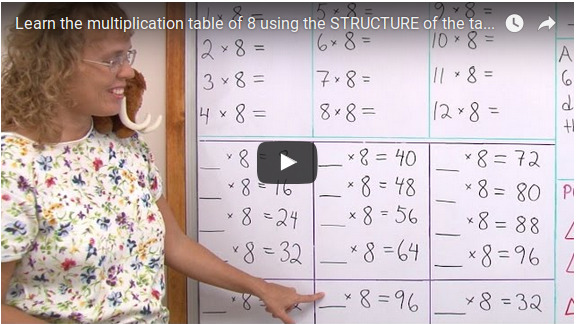 Maria's Math Tips, February 2016 |
Hello again!
|
1. Math Mammoth newsIf you didn't yet hear about this, I'll mention it again:We now have Math Mammoth International Version available! 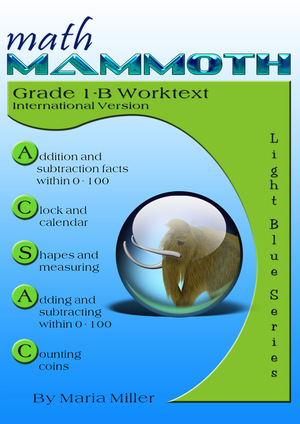 Currently available for grades 1-6, this version differs from the US version in these aspects:
Currently available for grades 1-6, this version differs from the US version in these aspects:
Math Mammoth, International version |
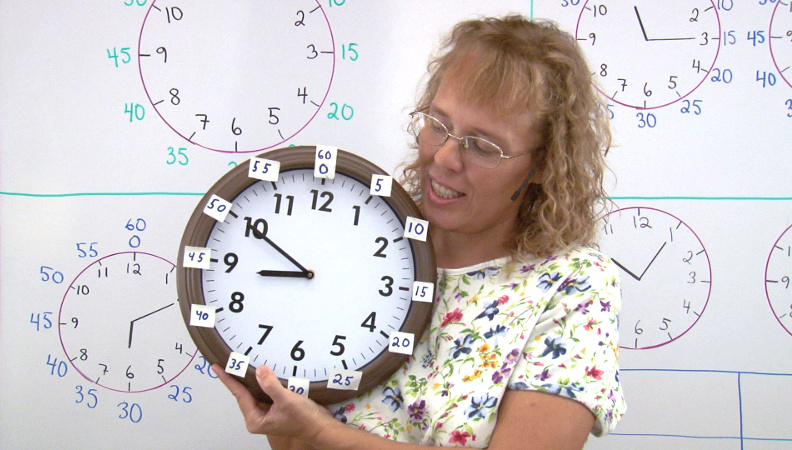
2. Telling timeCheck out these videos of mine on telling time, meant mostly for grades 2-3, but I will be adding some for 1st grade hopefully soon.Tell time to the nearest five minutes - grades 2-3 Elapsed time - whole hours - grades 1-3 Tell time using "past" and "till" - grades 2-3 |
3. Note on mental mathSomeone stated this to me recently concerning her son..."Also I don't feel he is proficient in mental math addition and subtraction of large numbers either. Ex: 3125+6261. I don't know if it's because of me or not enough teaching material to show him or not enough practice for him." I answered the person this way: just wanted to drop a short note that I personally would not expect students to do 4-digit addition mentally; I myself don't do that. One characteristics of efficient problem-solvers is that they decide which TOOL is the best & most efficient to use for each calculation. The tools are: your mind, calculator, and paper & pencil. I have included a lot of simple mental math in my books, because your mind clearly is faster for solving 10 x 56 or 25 + 26 than reaching for a calculator, punching in the numbers, and getting the result. But at some point... maybe with 3 or 4-digit additions, the calculator becomes faster. So, I feel students need to know HOW to do such additions on paper and pencil, and HOW to do 3-digit additions even mentally, but when it comes to actual real-life situations, mental addition is not always the best choice... it DEPENDS on the numbers involved, and many other factors. Students DO need to learn mental math also for this reason: it builds "number sense", which then helps them understand algebra. But there's a limit... there's no need to go "overboard" with it, either. See also my article on number talks — short math problems where we let everyone voice how they came up with the answer (using mental math). |
4. Puzzles from Nrich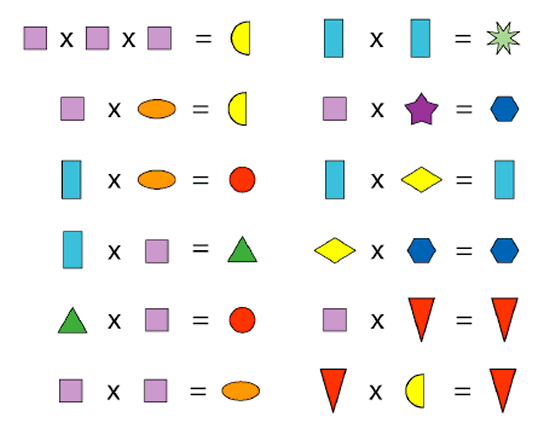 I found a neat "algebraic" multiplication puzzle for elementary school children...
I found a neat "algebraic" multiplication puzzle for elementary school children...
Shape Times Shape Puzzle These eleven shapes each stand for a different number. Can you work out what they are? From NRICH - home of "rich" mathematics Here's another one from the same site... a true mathematical exploration! Consecutive Numbers My 7th grader enjoyed this math activity a lot (I called it an "exploration" for her). We did it together, as I didn't know the "right answer" or how it would go. You choose four consecutive numbers, such as 7, 8, 9 and 10. Then you place + and − signs in between to make an expression, such as 7 + 8 − 9 + 10 Try all different combinations of + and - signs, and see what ANSWERS you get. Then change your numbers. And try a third set of numbers also. You'll notice something interesting! I even made a simple spreadsheet to work it out in a spreadsheet program. In the end, I showed my daughter how to present four consecutive numbers ALGEBRAICALLY... we will have n, n + 1, n + 2, and n + 3. Then, she actually figured out the algebraic expressions for all the possibilities of + and - signs between them. For example, one of them would be n + (n + 1) − (n + 2) − (n + 3) It ended up being a NEAT demonstration of the power of algebra: the POWER of GENERALIZATION. She was able to see the results of the exploration in a GENERAL sense, instead of simply trying different individual numbers. Nrich.maths.org has lots more to offer — puzzles, games, and explorations. Check it out! |
5. Videos for the multiplication tablesI know I included this already in my previous newsletter, but I'm including it again, because I feel it is important enough to mention twice :).I've made a series of videos to help students/children learn the multiplication tables from 2 to 12. They are presented in a specific order — easiest ones first — which makes learning them MUCH easier. Each teaching video has a similar structure:
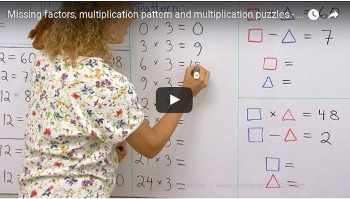 The series of videos also include "INTERLUDES": short video lessons in which we look at multiplication patterns, missing factors, word problems, and puzzles.
The series of videos also include "INTERLUDES": short video lessons in which we look at multiplication patterns, missing factors, word problems, and puzzles.
Check out also my article on how to learn the multiplication tables. And don't miss Mathy's (my mascot) VICTORY DANCE after having studied all the times tables: 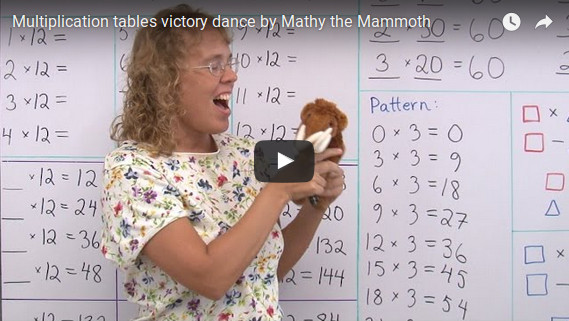
Thanks for reading! Feel free to forward this issue to a friend/colleague! Subscribe here. Till next time, Maria Miller |
| Topical worktexts | Complete curriculum | Placement tests |
| Math Mammoth freebies | Math Mammoth on Facebook | Newsletter Archives |
